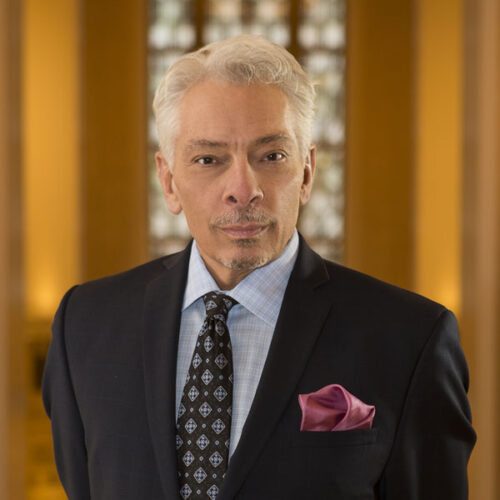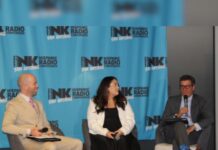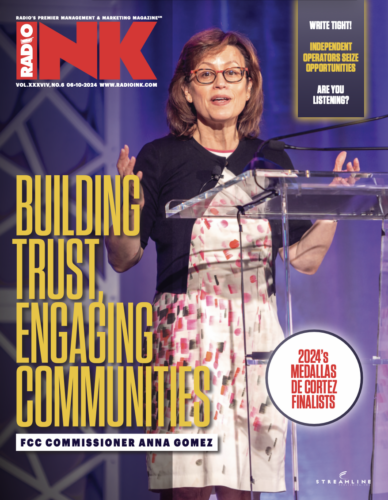
(By Mike McVay) Great talent are great storytellers. They use words as a paintbrush to create a visual that is unique and different in each listener’s mind. They know how to use descriptive words that are relatable and imaginable.
Such storytellers know when to pause, emphasize a word, and which words need such emphasis. They can tell stories efficiently by getting to the point without cutting a story needlessly short.
Why do some storytellers create the urge to listen to their show every day, binge every episode of their podcast, search out short bytes on YouTube, and follow them on social media? It starts with the way you tell a story, your delivery, and most importantly, that you know where you’re going when you start your story. It’s about using descriptive words, the pace with which you tell the story, and it’s about you as the storyteller understanding the message at its core. It’s about much more than reading letters on a page.
Bruce Springsteen is one of the greatest storytellers of all time. His songs are all such stories, that if they weren’t accompanied by music, you’d consider them to be a poem or a short story. Take for example Springsteen’s song “Thunder Road” from the album “Born to Run.”
The screen door slams, Mary’s dress sways
Like a vision, she dances across the porch as the radio plays
Roy Orbison singing for the lonely
Hey that’s me and I want you only
Don’t turn me home again
I just can’t face myself alone again
Don’t run back inside, darling you know just what I’m here for
So you’re scared and you’re thinking that maybe we ain’t that young anymore
Show a little faith, there’s magic in the night
You ain’t a beauty, but hey you’re alright
Oh, and that’s alright with me.
Springsteen uses visualization to paint a picture in the mind of the listener. Every line of the song creates technicolor images in one’s imagination.
The Screen Door Slams – You immediately see an old wooden screen door. The screen is torn and curled up in one of the lower corners. If it’s an old door, when it slammed, it didn’t close all the way. The door is slightly ajar. It’s an old wooden door, so that means there’s an old wooden porch. The porch has to have a pair of old muddy boots sitting on it. That leads me to envision a farmhouse with acreage somewhere within view of the swing on the porch.
Mary’s Dress Sways/Like a Vision She Dances Across the Porch as the Radio Plays – In the eyes of my mind I can see a woman in a soft light blue shift dress, a few yellow flowers on it, and it sways back and forth as she dances across the porch. Roy Orbison’s song “Only the Lonely” is playing on the radio. In my mind, the radio has to be an older plastic model that’s plugged into an outdoor socket. Sitting directly on the wooden porch. Not on a table.
And so, it goes. Dissecting the description from the rest of this hit song. Depicting a warm summer’s night when an older couple, male and female, interact as they meet on the front porch of this old country house. He pleads with her to allow him back into her life. To end his loneliness. To resume a romance that had gone awry. At least that’s the picture that engulfed me as I heard the song and read the lyrics. Springsteen told the story with force, but the message was delivered softly.
Here’s what we know:
- Stories, when told powerfully and descriptively, are most captivating, memorable, and easy to share with others as you repeat them.
- The best stories are those that you can visualize. If you can visualize it, you can tell it visually.
- If you’re delivering a scripted story, then start with understanding the words on the page. Don’t read aloud caricatures and letters on a page. Read the words and think about them, before you turn on the microphone. Think about the story and what it means and then tell me the story.
- If you are not working from a script, but you’re telling a story from notes, then think about how you want your story to end. If you don’t know where you’re going, then any road will take you there. Remember … the purpose of this exercise is to engage your listeners and keep them throughout the entire story.
- People communicate in stories. Luckily, storytelling is something we almost all do naturally, starting at a very young age. But there’s a difference between good storytelling and great storytelling. It isn’t about the number of words. It’s about the delivery and choice of words used. It’s the pace. It’s the emphasis used.
- Sometimes, telling the story quickly and without embellishment, makes it a better story. One time an air talent asked me how they could tell a story quickly by giving me a three-sentence example of what the story was about. They asked “How do I tell a story about finding a raccoon living in the engine of my truck, which kept it from starting, and when I opened the hood to see what was wrong, the raccoon jumped at me? I don’t know who was more scared. The raccoon or me?” I replied, “You just did.” Don’t overthink your story.
- There is a science behind how we hear stories. The left side of the brain helps us to think logically. The right side of the brain helps us recall memories and experience emotions. Both sides are linked together by the Neocortex. When we tell stories, both sides of the brain are stimulated and work together. We see the whole picture. We connect to the person telling the stories.
- Storytelling is the key to communication in media. Be it on-the-air, on a podcast, during a newscast, a sportscast, a YouTube Video, or from the stage during your musical performance… whatever the platform and wherever you are.
- When you tell a story … be efficient. Not Brief. Be efficient. Think of it as Hallway Talk for efficiency … Communicate as you would if you were passing someone in the hallway at work or school. We’d face each other as we started talking, stand sideways and face each other as we passed one another, and then walk backward facing each other as we finish the story.
- “Never mention anything if it’s not referenced later in your story.” Interestingly this is also a cardinal rule for screenplays— wasted words can lead to what’s called “false foreshadowing”: The audience is forced to note and remember a detail which ultimately doesn’t figure in the story resolution. No one has that kind of an attention span.
- If you think about how people talk when they tell a story, their inflection starts the story and that sets the stage, and then you build the story to a finale. The tone and pace with which you tell a story are important in how the audience hears a story. Faster for excitement. Slower to emphasize tension. Pause for attention. Match your delivery to the emotion that you want to evoke in the audience.
Great stories are universal; Great storytelling is about taking a piece of the human condition (so things like birth, growth, emotionality, aspiration, conflict) and conveying it in a unique situation. What you’re trying to do, when you tell a story, is to write about an event in your life that made you feel some particular way. And what you’re trying to do, when you tell a story, is to get the audience to have that same feeling.
Great stories have a clear structure and purpose. What is the emotion that you want the listener to feel when they hear your story? Why must you tell this particular story? What’s burning within your soul that your story feeds off of? What greater purpose does the story serve? What lesson does it teach? How do you want the listener to feel?
Great stories have a character you can cheer for, loath, admire, or dislike. Great characters create an emotion. Your storytelling, because of your inflection, supports that view of the character. Your inflection influences how the listener thinks of the story. Examples; Let’s eat, grandma. Let’s eat grandma.
Great stories appeal to our deepest emotions; anger, disgust, fear, happiness, sadness, and surprise. Great stories are surprising and unexpected. What makes a story compelling is when our perceptions of our reality are challenged and we’re forced to question ourselves and our perspective. Great stories are simple and focused. We know a good story when we hear one. They have the right amount of information, they aren’t over-the-top in description, and they are… that word I wrote earlier – efficient.
The very best storytellers know how to deliver a story. They’re the ones whose radio shows resonate with an audience. They’re the ones whose podcasts have continual growth in subscribers and follows. The bottom line; Don’t read me a story. Tell me a story.
Mike McVay is President of McVay Media and can be reached at [email protected]. Read Mike’s Radio Ink archives here.






Once again Mike, a masterful understanding and explanation of what true talent is able to do. I remember asking talent what he thought his role was and he answered, “I’m a dj – an air personality,” to which I answered, “actually, you’re a storyteller.” To me you’re article here captures the absolute essence of what should be everyone focus, from on air talent to sales/marketing strategists. You’re frankly, as successful as you are because you tell great stories and teach others how to do the same. Keep it coming Mike!